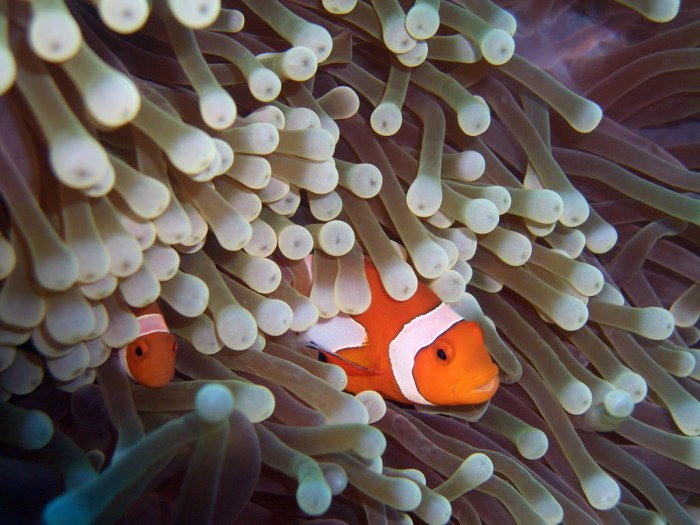Whenever I’m asked what my favourite fish movie is (and I get that question surprisingly often), I unhesitatingly answer Finding Nemo. Such a lovely story of redemption and family love, all set in a beautifully animated water world. Clearly I’m not the only one, for since the movie appeared in 2003 the clownfish has become one of the most famous species of fish in the world. Whereas the movie is spot on in its visual representation of most of the animals, its depiction of the fishes’ behaviour may not be entirely accurate. While the film correctly states that clownfish are no funnier than other fishes, it gets most of its family values quite wrong.
Clownfish are quite aggressive, territorial, hierarchical animals. The father takes care of the eggs, but as soon as they hatch the larvae leave their parents’ anemone. When a clownfish reaches adulthood, it looks for an anemone to settle in. It rarely finds an unoccupied one, however, and thus has to join one where other clownfish already live. When it is accepted, it starts at the bottom of a strict linear hierarchy, which means that all the others pick on him. Yes, him, for all clownfishes are born male and only turn female once they become the dominant fish in the anemone. The second fish in line is the only male allowed to mate with her. When the female dies, the second in line turns female.

So, when Nemo’s mother dies at the beginning of the film, his father Marlin should turn into a dominant female and chase Nemo out to find his own anemone. While I understand that would make for a far less child-friendly movie, I’d definitely watch it.
“for all clownfishes are born male and only turn female once they become the dominant fish in the anemone. ”
I smell an incredibly progressive sequel here.
LikeLike
Yes, they missed out on a great opportunity there. Finding Dory isn’t all it could have been.
LikeLike